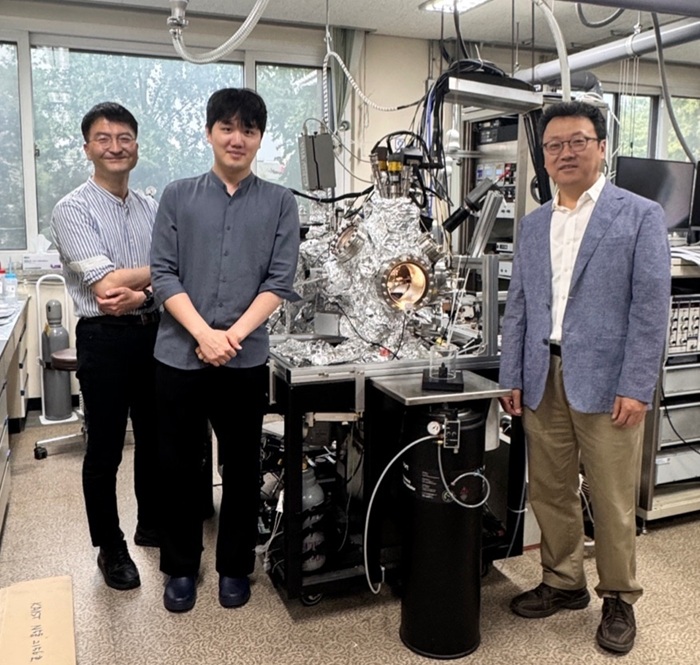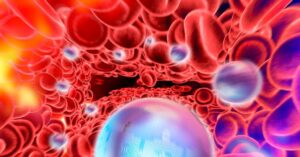
The Korea Advanced Institute of Science and Technology (KAIST) has unveiled a groundbreaking atomic catalyst that could revolutionize the reduction of air pollution. On July 22, KAIST announced that a joint research team, led by Endowed Chair Professor Jeong Young Park from the Department of Chemistry, has developed a new design concept for a two-dimensional material known as platinum diselenide (PtSe₂). This innovation promises high-efficiency carbon dioxide conversion and carbon monoxide reduction, offering a potential leap forward in gas-phase catalyst technology.
Platinum selenaide, a combination of platinum (Pt) and selenium (Se), is renowned for its excellent crystallinity and precise control over interlayer interactions, making it a subject of extensive research across various fields, including semiconductors and electrochemical devices. The research team, which includes Professor Hyun You Kim’s team from Chungnam National University and Professor Yeonwoong Jung’s team from the University of Central Florida, has demonstrated that atomic-level platinum on the surface of platinum selenaide can function effectively as a catalyst for gas reactions.
Innovative Design and Performance
The research team designed the catalyst to maximize performance by dispersing platinum atoms across the surface, moving away from traditional bulk platinum catalyst forms. This approach not only allows for more catalytic reactions with less platinum but also enhances electronic interactions between platinum and selenium by controlling the surface’s electronic structure. The platinum diselenide thin film, only a few nanometers thick, exhibited superior carbon monoxide oxidation performance across all temperature ranges compared to conventional platinum thin films.
Key to this enhanced performance is the increased exposure of surface platinum atoms due to ‘selenium vacancies (Se-vacancy)’, which also boost the adsorption sites for gases. The team confirmed in real-time that these platinum atoms acted as adsorption sites during the reaction process through ambient-pressure X-ray photoelectron spectroscopy (AP-XPS) analysis at the Pohang Accelerator Laboratory. This analysis was supported by advanced equipment capable of observing surfaces at a one-nanometer level in an ambient pressure environment.
Scientific Validation and Implications
Simultaneously, computer simulations using Density Functional Theory (DFT) calculations provided theoretical proof that platinum diselenide exhibits different electron flow characteristics than general platinum. Professor Jeong Young Park commented,
“This research presents a new design strategy that utilizes platinum diselenide, a two-dimensional layered structure different from conventional platinum catalysts, to elicit catalytic functions specialized for gas reactions.”
He emphasized that the electronic interaction between platinum and selenium creates conditions for balanced adsorption of carbon monoxide and oxygen, enhancing reactivity across all temperature ranges.
The research, co-authored by Dr. Gyuho Han from KAIST, Dr. Hyuk Choi from Chungnam National University, and Professor Jong Hun Kim from Inha University, was published in the prestigious journal ‘Nature Communications’ on July 3. The paper, titled “Enhanced catalytic activity on atomically dispersed PtSe₂ two-dimensional layers,” highlights the practical applicability of this high-efficiency catalytic reaction mechanism through atomic-level design and adsorption control technology.
Broader Impact and Future Prospects
This research was supported by various organizations, including the Ministry of Science and ICT’s Mid-Career Researcher Support Program, the Ministry of Education’s Core Research Institute Program, and the U.S. National Science Foundation (NSF) CAREER Program, among others. The accelerator-based analysis was conducted in cooperation with the Pohang Accelerator Laboratory and the Korea Basic Science Institute (KBSI).
The development of this atomic catalyst represents a significant advancement in addressing air pollution, particularly in urban areas where carbon emissions are a major concern. By enabling more efficient catalytic reactions with less material, this innovation could lead to more sustainable and cost-effective solutions for reducing harmful emissions.
As the world continues to grapple with climate change and environmental degradation, the implications of this research are profound. The potential to reduce carbon emissions more effectively could play a crucial role in global efforts to combat air pollution and its associated health risks. Moving forward, further research and development could pave the way for commercial applications of this technology, offering a promising tool in the fight against climate change.





